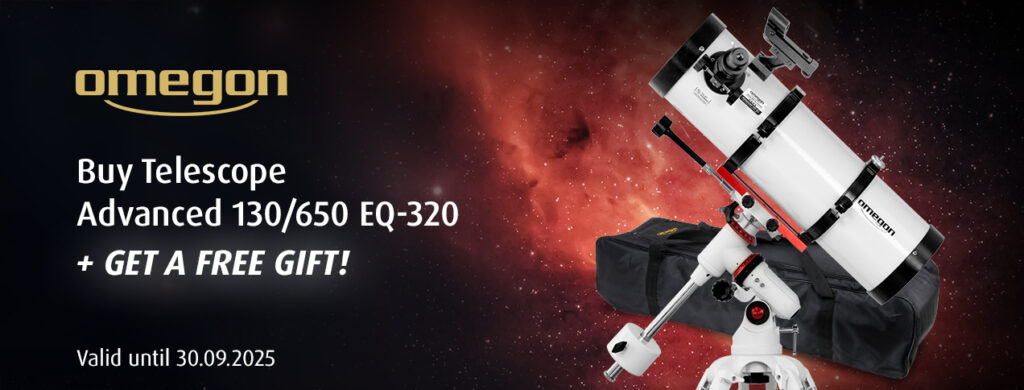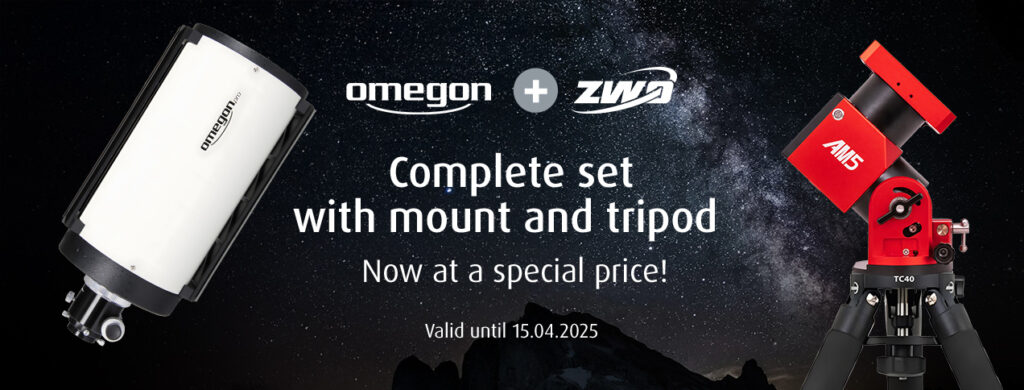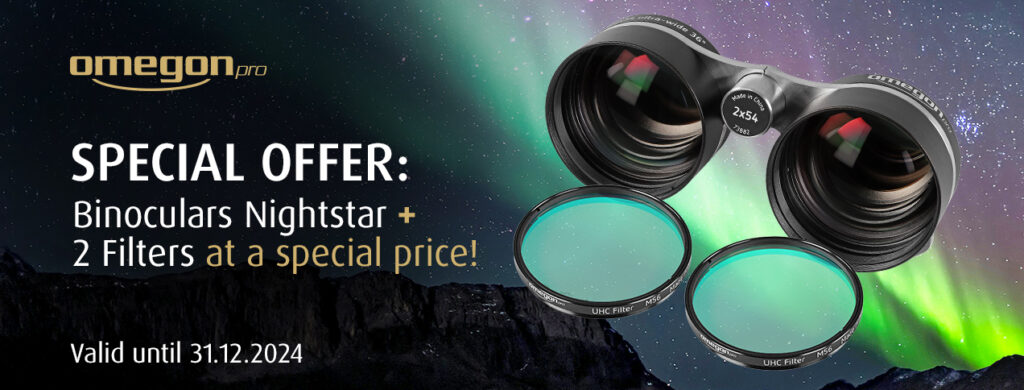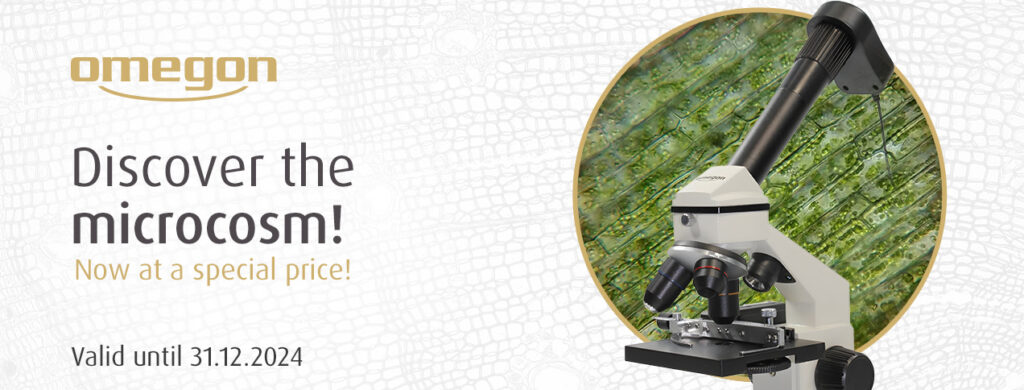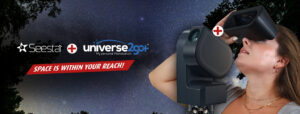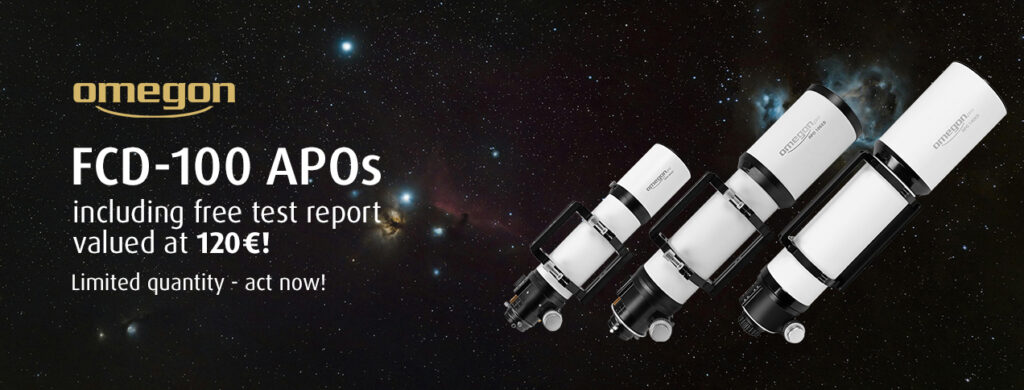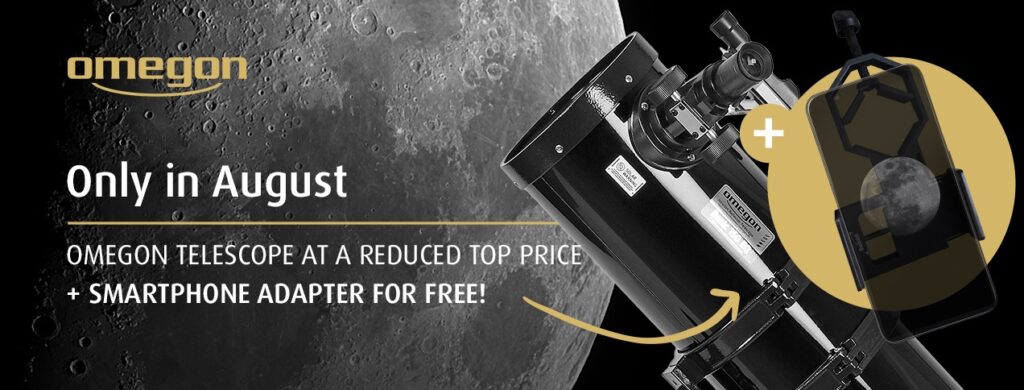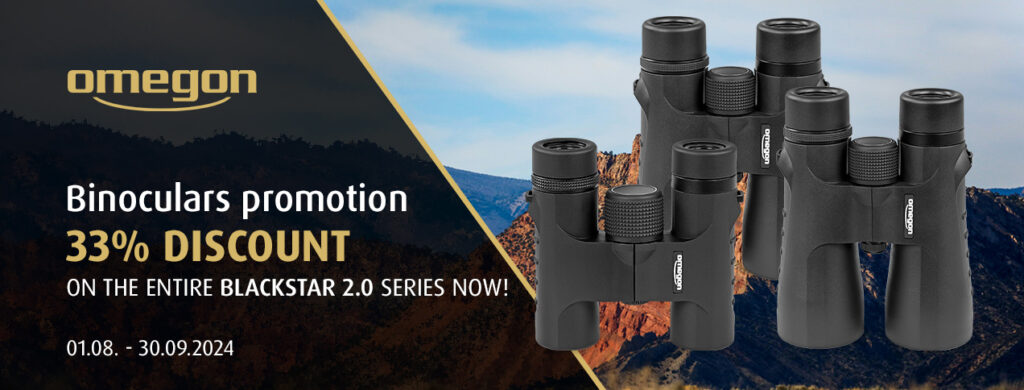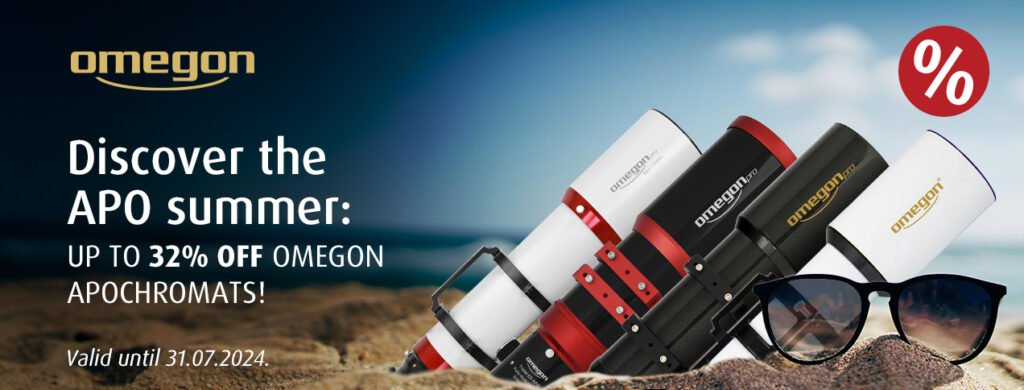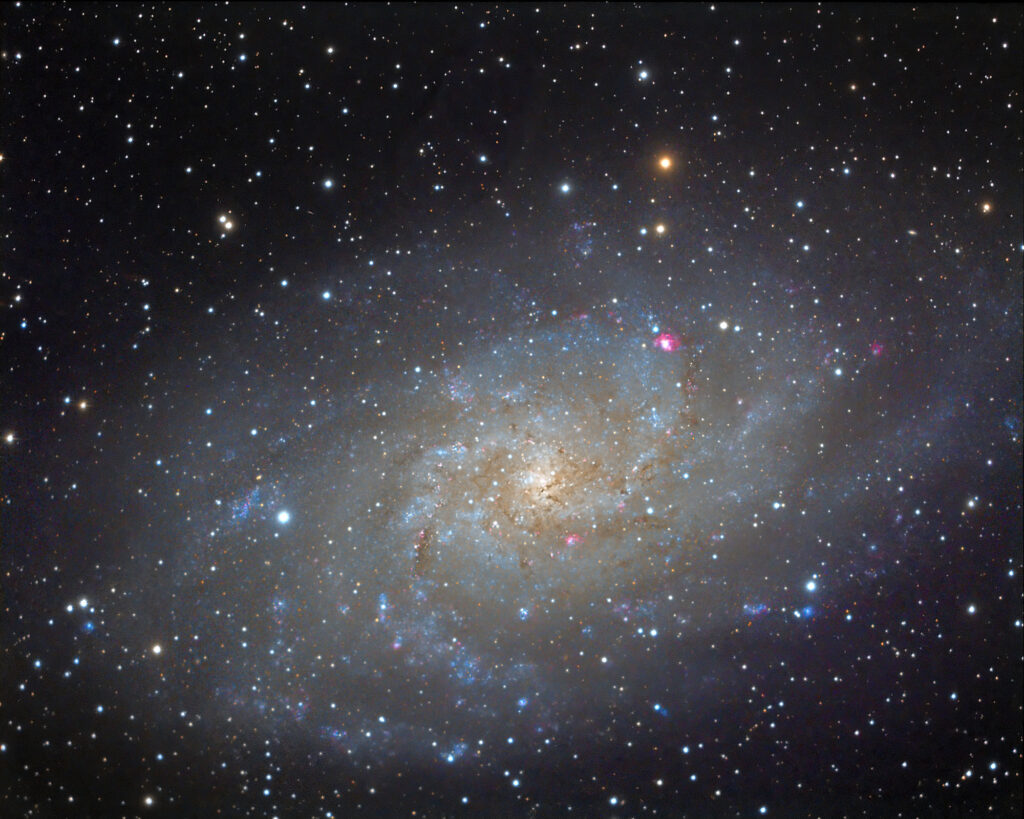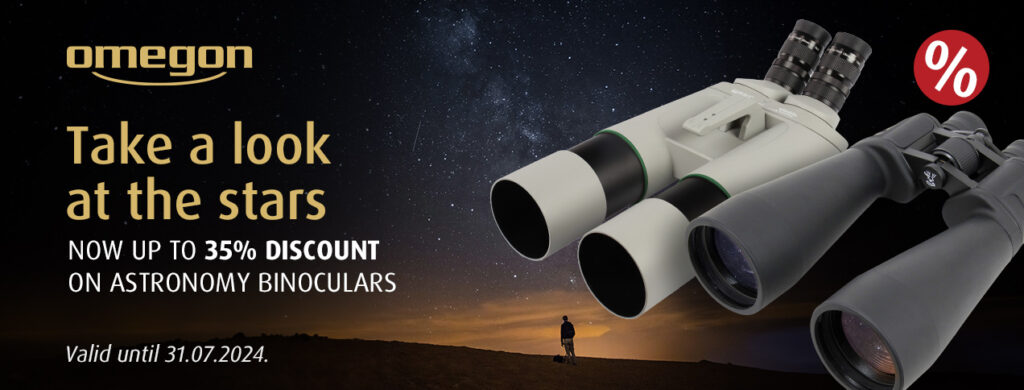
Are you a hobby astronomer or nature watcher looking for a pair of binoculars that will reveal every detail? Then take advantage of our special offers on large binoculars and save up to 35% for a limited period only.
Vividly experience the beauty of the universe with Omegon binoculars. Or, when observing nature, bring distant objects up close. On a stable tripod, these binoculars with their large objective lens diameter will reveal the full light-gathering capability that only binoculars with lenses of 50mm or more can deliver.
A short overview of the binocular series: bargains for June and July
Brightsky
Explore nature by day and by night with Brightsky binoculars. At up to 100mm in diameter, their large, multi-coated objective lenses collect plenty of light – even at dusk. Choose between 45° angled eyepieces for nature watching, or 90° for observing the stars. The magnesium housing ensures that your binoculars are particularly lightweight, and it is waterproof and nitrogen-purged. Brightsky binoculars combine well with a sturdy tripod or with the Omegon Colossus mount.
Argus
Ultra-light binoculars for observing stars and nature. With its magnesium housing, it is lightweight and perfect for outdoor use. Thanks to BAK-4 prisms and multi-coating, you will enjoy crisp contrast combined with high edge sharpness. Argus binoculars are comfortable to use, even for spectacles wearers. The eyepieces are individually focusable for stable, balanced sharpness.
NightStar
Nightstar is the entry-level series of binoculars designed for observing the night sky. The already well-priced but good-quality binoculars are now even more of a bargain. An insider’s tip is the popular 20+40×100 binoculars: with these you can really dive deep into the starry sky.
Take a look at our low prices on astronomy binoculars – only until the end of July 2024.

